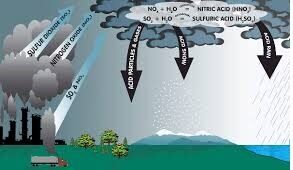The Social Dimensions of environment incorporate – Demographic Pattern, Life styles of people, Human Health and Habitat, and Social Interactions among organisms.
A. Demographic Pattern
The Demographic Pattern relates to the growth of human population, its density and distribution, life expectancy, birth rate and mortality. It is due to the planned economic development that India has become able to manage its growing population. It is the world’s second populous country with a population around 95 crores. It supports about 17 percent of the world’s population on just 2.4 percent of the world’s land area.
The demographic dimensions of the social environment include urbanisation, urban congestion, growth of slums, over encroachment of government buildings and monuments, plans and strategies of social development, migration of people due to hazards and mega projects, rehabilitation programmes etc.
Due to rapid urbanisation notable movement of refugees and displaced persons has been recorded over past 30 years. At the end of 20th century, the number of people living outside their own country was estimated to be 150 million.
B. Life Style of People
The life style relates to the ways of living of people of a country. The life style of the people across the globe and in India also, has changed over the years and their life standard has also gone up considerably. The household consumption expenditure in India has moved from food to clothing, rent, furniture, furnishing and recreational activities. The dimensions of life style cover education, supports from government sectors, care of old people, social security for people, eradication of poverty etc.
C. Human Health and Habitat
This dimension relates to sanitation, provisions of facilities to people, access to basic health facilities, spread and control of diseases and irradiation of key problems that pose challenges to Indian societies. Health dimensions also include-
(a) Contribution of environmental factors to health problems,
(b) Primary healthcare, mother and child healthcare, need of social health in development sectors,
(c) Formulation of public and environmental health policies, Legislations, and standards, consumerism and consumer education,
(d) Strengthening of health surveillance, early alert and rapid response mechanism at district, block and Panchayat levels.
Habitat dimensions relate to housing of people and provisions of basic services and amenities. These dimensions also cover-(a) Good sanitation and uncontaminated water supply,(b) Facilities of drainage, liquid and solid waste management, (c) National Housing Policy,(d) Formulation of legislation for the protection of natural environment; its flora, fauna and abiotic resources.
D. Social Interactions among Organisms
The social dimensions include interactions also that go on among organisms continuously in different ecosystems. The social interactions have been grouped into Positive and Negative interactions. Positive interactions include mutualism, commensalisms, amensalism and protocooperation. Negative social interactions include exploitation, predation, antibiosis and competitions.




